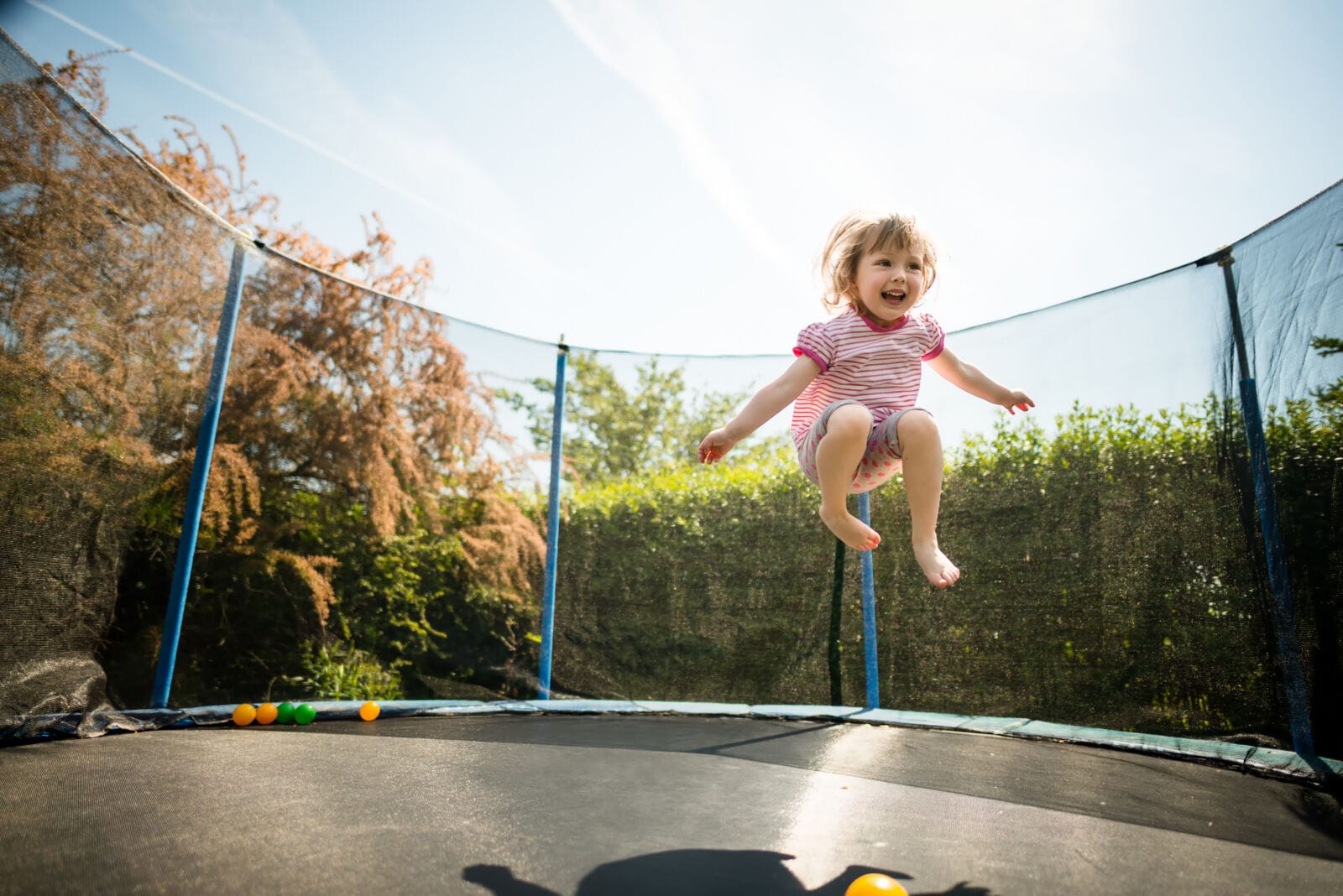Deciding when the right time is to introduce your child to a trampoline can be challenging, especially if you have never needed to do this before. A trampoline can provide hours of fun, but if introduced too soon, it can be dangerous for your children. Today, we are here to ensure your children are safe and you have the necessary answers. Typically, your child should not be introduced to a trampoline before the age of six, and we discuss why in our article and what size trampoline you should use when introducing them to your children.
MORE NEWS: Phoenix bucket list: 25 things you must do
INDUSTRY INSIGHTS: Want more news like this? Get our free newsletter here
How old should a child be when they use a trampoline?
Every trampoline will have an age limit, stating the minimum age for bouncers, but usually this is six years old. The age limit is recommended by the American Academy of Pediatrics, which states that no child under six should jump on a trampoline due to the increased risk of injuries. Under the age of six, children’s bones are still developing, so allowing them to bounce on trampolines increases their risk of fractures, sprains, and other related injuries.
You can find trampolines designed for toddlers and children under six though, which would be recommended first instead of an outdoor trampoline. These are designed to be safer, but you can also choose to use tunnels or tumbling mats to keep younger children active and engaged, without the increased risk of injury.
Trampoline age groups
When purchasing a trampoline, it is vital that you purchase the right size for the age of the bouncers. While you can purchase a large trampoline from the get-go for your large garden, we do think it’s worth looking at the age groups and recommended trampoline sizes to help you make your decision and choose the right option. Trampoline age groups are split into adults, pre-teens and teenagers, and young children, with details on these groups and trampoline sizes outlined below:
Adults
For adults (any bouncer aged 18 and over). When choosing a trampoline for adults, you should consider the size of the trampoline, the available space in your garden, and its intended use. If the trampoline is being used for professional or training reasons, then you will want to pay close attention to the jumping space and materials used for the mat.
You should also check the weight limit and capacity of the trampoline to ensure it is not exceeded. Larger trampolines will come with larger weight capacities, but you will need to check them before purchasing, especially if you plan to have multiple bouncers. If you are planning to use the trampoline with children, too, we recommend adding safety features like mats over springs and easy steps for them to climb, keeping them safe.
Pre-teens and teenagers
Pre-teens and teenagers, those aged 11 to 17, are better suited to larger trampolines. These will take into account growth spurts during this period and ensure that the trampoline will last for years. A larger trampoline means you won’t need to pay twice when your child outgrows it, providing better value for money.
When purchasing a trampoline for pre-teens and teenagers, you need to consider whether the trampoline is being used for athletic or pleasure purposes. If the trampoline is being used for athletic purposes, like trampolining or gymnastics, then you need to ensure it has the right jumping space. Jumping space refers to the space that can be used for jumping on the trampoline, rather than its overall size. Some trampolines, like spring trampolines, will have part of their size taken up by the springs. This reduces the size of the jump space, restricting the space your children have to enjoy. You might need to increase the size of the trampoline to ensure adequate jump space, or opt for a spring-free design where this isn’t an issue.
Young children
Young children, those aged six to ten, should have small to medium-sized trampolines. You might want to consider larger options if your child is tall for their age, but usually, a small to medium-sized trampoline is best. Small to medium trampolines are typically between 6 and 12 feet in diameter. When choosing your trampoline, you will want to look for the following:
- Its safety features
- The jump space on the trampoline
- The size of your garden
- The size of your child
When choosing a trampoline for young children, it’s worth considering how long you want the trampoline to last. If you want a trampoline that will last for years and not need to be replaced, it’s worth sizing up and getting a larger trampoline. This prevents your children from outgrowing the trampoline, but your options will depend on the size of your garden and its available space.
However, if you are looking for a trampoline that will be used for now, a smaller one is best. A smaller trampoline is a good option if you aren’t sure how often your child will use it. It won’t take up as much space in your garden, and you won’t spend as much as you would with a larger trampoline.
Find your new trampoline for your child today.
Now that you know the age ranges and recommended trampoline sizes, you can easily narrow your search and find the perfect trampoline for your child! When searching for your dream trampoline, we recommend using Vuly, which has an impressive range of trampolines in varying sizes and budgets. Check out the trampolines at Vuly to find your new one today.




